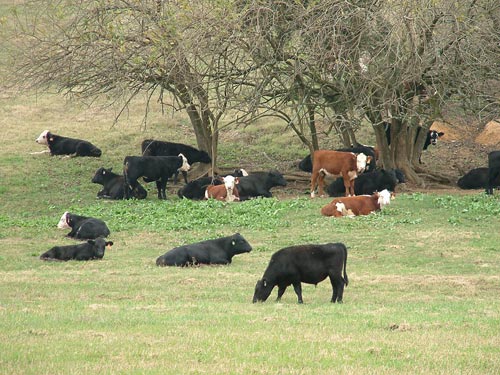June 14, 2011

With more than 17 percent of the state suffering drought conditions and no substantial rainfall in the immediate forecast, it’s important for Arkansas cattle producers to have a drought management plan in place.
“Cattle producers have experienced excellent pasture growth the past two months but drought and extreme dry condition may be around the corner,” said Tom Troxel, associate department head for Animal Science for the University of Arkansas Division of Agriculture.
“If it fails to rain in the next week to ten days, and, with high temperatures and dry winds, pastures will become drought stressed,” he said.
According to the U.S. Drought Monitor, 17 percent of Arkansas is now under some level of drought, ranging from abnormally dry to extreme drought, and the state has been scorched by record high temperatures, ranging as high as 101 degrees Fahrenheit at Keiser and Eudora.
If rainfall doesn’t arrive in mid-June to early July, many cattle producers will be short of forage for hay and grazing this summer, said Troxel. He recommends putting together a strategy for coping during the drought, just in case.
Check pastures to prevent overgrazing. Be ready to cull non-productive or low performance cattle. Provide a good water supply as ponds and streams begin to dry. Wean calves early to reduce the cow’s nutritional demands.
Make free-choice salt and minerals available. “Nutrient needs for phosphorus and other minerals and vitamins should be met, especially during periods of drought.
“Environmental conditions that retard plant growth often cause excessive accumulation in plants of nitrate and prussic acid. If forage is suspect, have it tested for these poisons.”
The most common accumulators of nitrates are weeds, corn, sorghums, sudangrass, cereal grains, tame forage and legumes.
Troxel suggests producers continue following recommended guidelines for vaccinating cattle, controlling flies and internal parasites. And he recommends that producers take care not to overextend themselves financially when it comes to feed during the hot dry months.
For additional information regarding managing cattle and pastures contact your local county Extension agent.
You May Also Like




